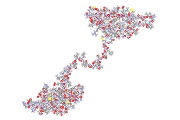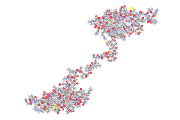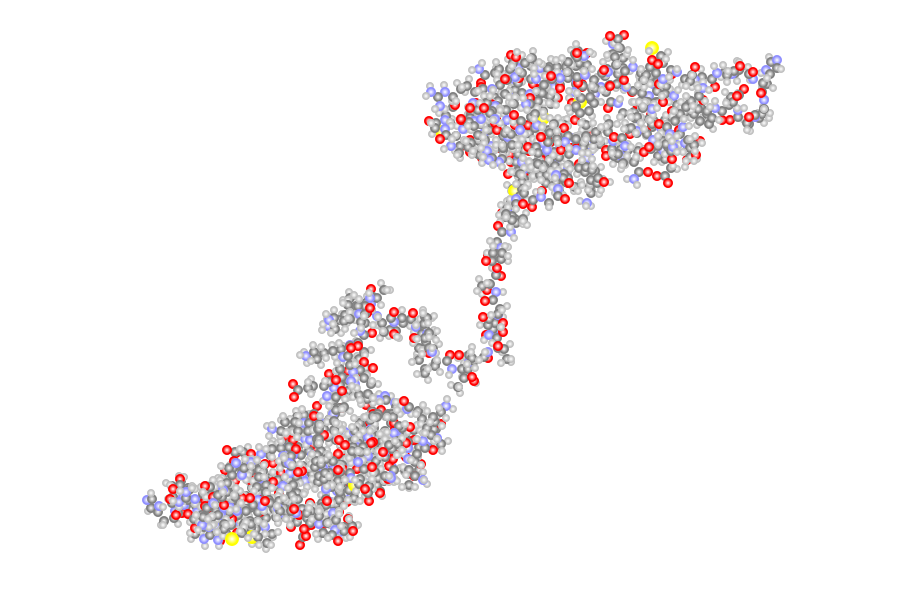Protein kinase RNA-activated, PKR
Click to view 3D molecules involved in the PKR. Very large files, consider using Google Chrome on a fast computer.
Protein kinase RNA-activated also known as protein kinase R (PKR), interferon-induced, double-stranded RNA-activated protein kinase, or eukaryotic translation initiation factor 2-alpha kinase 2 (EIF2AK2) is an enzyme that in humans is encoded by the EIF2AK2 gene. PKR protects against viral infections.
 PKR is activated by double-stranded RNA (dsRNA), the synthesis of which is
caused virally. PKR can also be activated by the protein PACT or by heparin. PKR contains an
N-terminal dsRNA binding domain (dsRBD) and a C-terminal kinase domain, that gives it pro-apoptotic
(cell-killing) functions. The dsRBD consists of two tandem copies of a conserved double stranded RNA
binding motif, dsRBM1 and dsRBM2. PKR is induced by interferon in a latent state. Binding to dsRNA
is believed to activate PKR by inducing dimerization and subsequent auto-phosphorylation reactions.
In situations of viral infection, the dsRNA created by viral replication and gene expression binds
to the N-terminal domain, activating the protein. Once active, PKR is able to phosphorylate the
translation initiation factor EIF2A. This inhibits further cellular mRNA translation, thereby
preventing viral protein synthesis. Active PKR is also able to mediate the activation of the
transcription factor NFkB, by phosphorylating its inhibitory subunit, IkB. Activated NFkB
upregulates the expression of Interferon cytokines, which work to spread the antiviral signal
locally. Through complex mechanisms, active PKR is also able to induce cellular apoptosis,
to prevent further viral spread.
PKR is activated by double-stranded RNA (dsRNA), the synthesis of which is
caused virally. PKR can also be activated by the protein PACT or by heparin. PKR contains an
N-terminal dsRNA binding domain (dsRBD) and a C-terminal kinase domain, that gives it pro-apoptotic
(cell-killing) functions. The dsRBD consists of two tandem copies of a conserved double stranded RNA
binding motif, dsRBM1 and dsRBM2. PKR is induced by interferon in a latent state. Binding to dsRNA
is believed to activate PKR by inducing dimerization and subsequent auto-phosphorylation reactions.
In situations of viral infection, the dsRNA created by viral replication and gene expression binds
to the N-terminal domain, activating the protein. Once active, PKR is able to phosphorylate the
translation initiation factor EIF2A. This inhibits further cellular mRNA translation, thereby
preventing viral protein synthesis. Active PKR is also able to mediate the activation of the
transcription factor NFkB, by phosphorylating its inhibitory subunit, IkB. Activated NFkB
upregulates the expression of Interferon cytokines, which work to spread the antiviral signal
locally. Through complex mechanisms, active PKR is also able to induce cellular apoptosis,
to prevent further viral spread.




